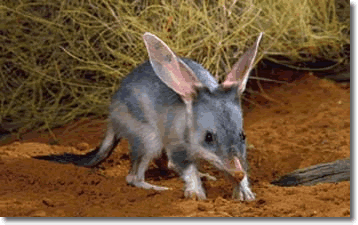
The koala, platypus and bilby are distinctively Australian. Thanks to our isolation from the other continents of the world and their many predators and diseases, species such as these have survived and flourished in our harsh climate.
However in the last 200 years (a mere moment in the evolutionary time scale) these species have been subjected to many new predators which they are not equipped to fight. As a result some of these, for example the bilby, face extinction.

The bilby is a small marsupial which flourished throughout Australia, but now lives only in grassland and acacia scrubland. In these areas it must compete for food with rabbits and livestock and it is preyed on by foxes and feral cats. In times of drought the bilby comes under severe pressure and cannot compete with the introduced species.
To protect the bilby we need to study their environment and document and analyse their breeding patterns, particularly in consecutive seasons of drought. What is needed is a population model.
In a simple population model we can assume that food is abundant and there are no predators. Thus the rate of increase of the population would be proportional to the size of the population. In this case the population, P, can be predicted by the differential equation: dP/dt = k P, where k is a constant.
However any reasonable model must take account of other factors, such as competition, predators and climate. Researchers at the University of Adelaide and Brussels and Dr Phil Pollett from the Mathematics Department at the University of Queensland are studying all these factors and developing complex population models which they hope will help save the bilby.
You can find out more about the bilby as well as information on other vulnerable and endangered species from the environmental resources information network at http://www.erin.gov.au/index.html
